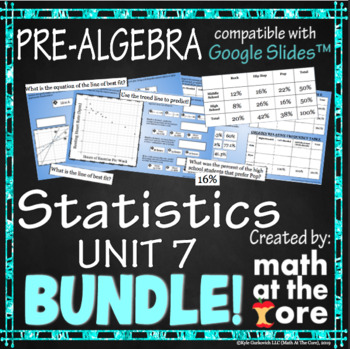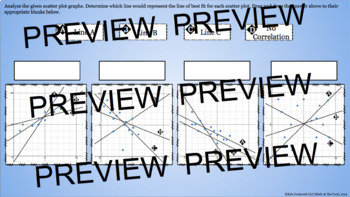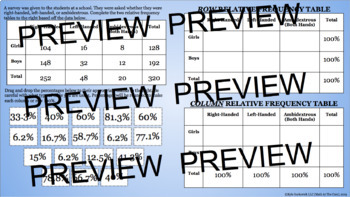Statistics - Unit 7 - BUNDLE for Google Slides™
- Zip
- Google Apps™
- Internet Activities

Products in this Bundle (4)
Description
- Great for online and distance learning! Created to be compatible with Google Slides™!
-In this interactive unit, students will interpret scatter plots. They should be able to determine what type of correlation a situation has whether it is by graph or through words. They should be able to identify clusters and outliers. students will analyze scatter plots and determine the line of best fit. They will use the line of best fit and the equation of that line to predict values. They should also be able to explain the correlation between the two given variables. Students will construct and interpret two-way relative frequency tables. Students should be able to determine the percent of given values.
- Includes all 4 activities shown above with over 150 problems!
Available in the full curriculum bundle!
Pre-Algebra - Curriculum - BUNDLE for Google Slides™
- PLEASE NOTE - this download contains PDF answer keys. On the second slide, the first step of the directions includes the link to the student version of the activity. All students and teachers using this activity must have a free Google account to use this activity on the Google Slides interface. Students can complete the activity and share it back with their teacher.
**DOWNLOAD INCLUDES - Every pdf file teacher guide explaining each activity with a link to click to copy the Google activity to your drive. It also includes the answer key (not available in the Google Slide).




